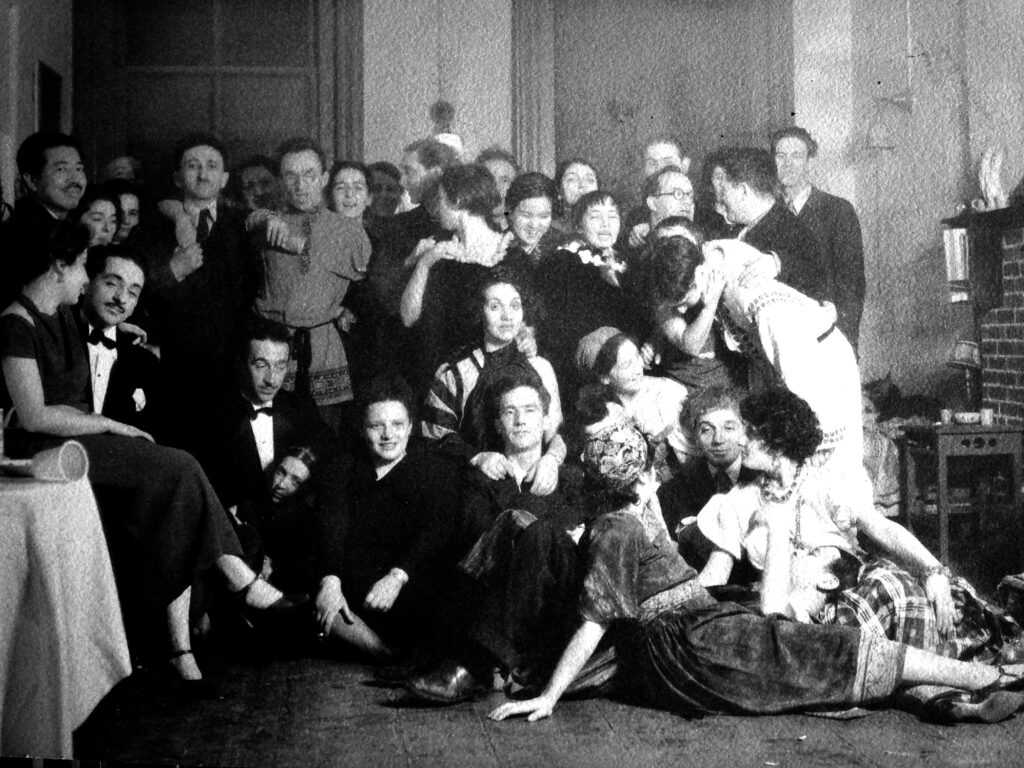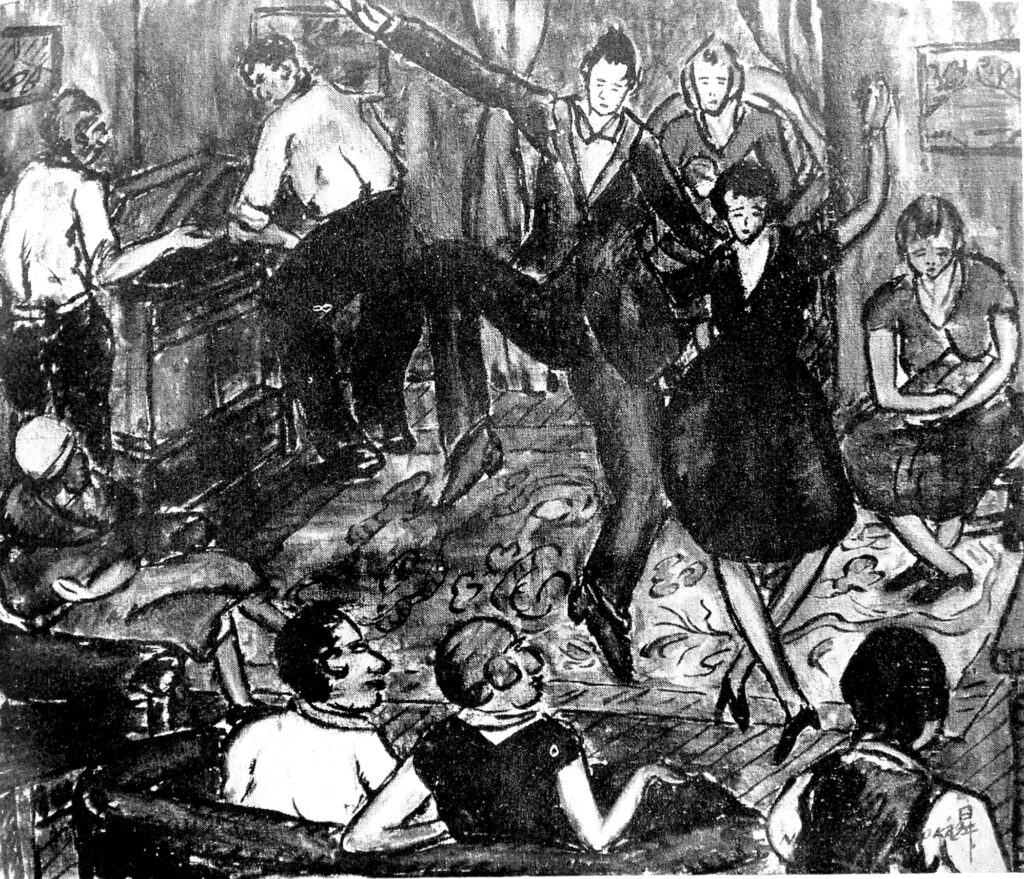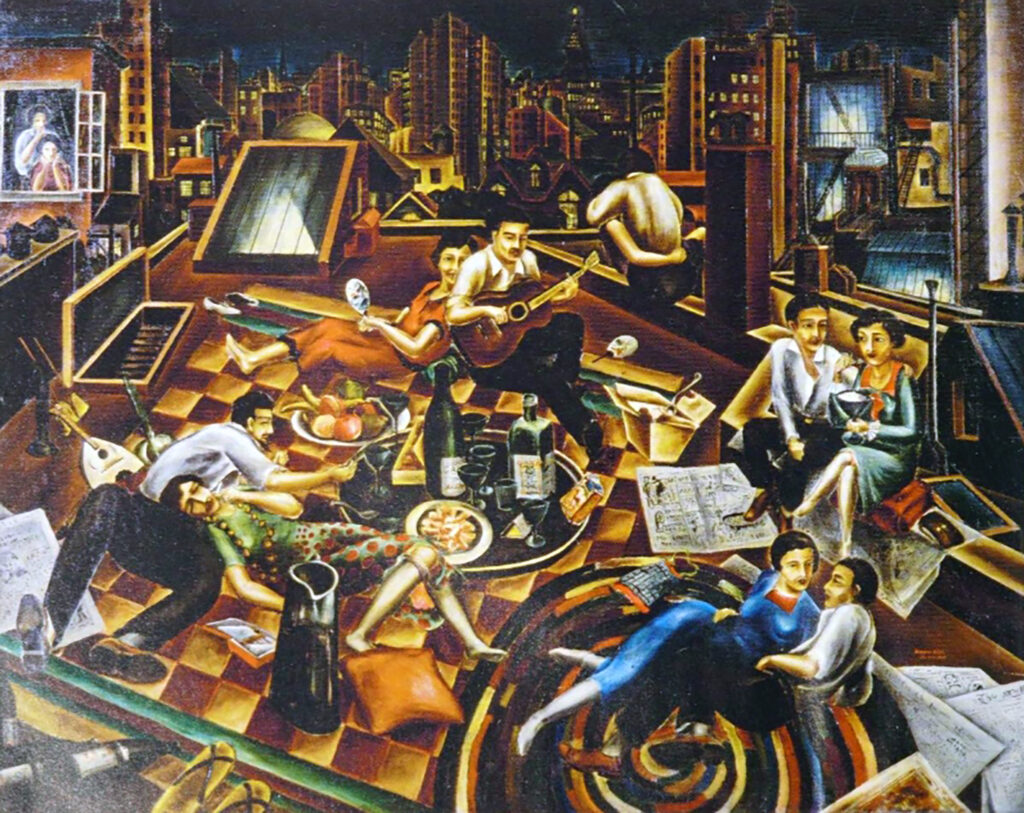Photo of artists gathering c. 1920s

Although the date is unknown, this photograph was taken at an artist’s party. Eitaro Ishigaki, second row, far left, and Yasuo Kuniyoshi, second row, fifth from the left, are shown. These photos show that Japanese artists who studied at the Art Students League in the 1920s had close contact with fellow artists working in New […]
Artists gathering Apr. 6, 1928

First row, third from right, Kiyoshi Shimizu, first row, fourth from right, Eitaro Ishigaki, second row, far right, Ayako Ishigaki, third row, second from the right, Bunpei Usui, third row, third from the right, Soichi Kakunan, third row, second from left, Yasuo Kuniyoshi It shows a joyful time of partying with fellow artists.
Kiyoshi Shimizu, Billiards, Chop Suey and Movies, c.1927 (Salons of America, 1927)

Kiyoshi Shimizu’s works often feature scenes of the city atnight, with countless billboards decorating the entrances tomovie theaters and people passing by.The New York Shimpo wrote, “Kiyoshi Shimizu has awonderful ability to take such a mundane subject matter and make it look noble. If I may make one criticism of your work, it is that […]
Noboru Foujioka, Fraternal Pleasure, c. 1927 (Salons of America, 1927)

The image shows men and women dancing to Black Bottom and Charleston in a bar that illegally operates on the black market. The subject matter of this work is the decadent aspects of Prohibition-era society. The New York Shimpo wrote, “The artist satirically captures the underbelly of society by example. However, it is a success […]
Kiyoshi Shimizu, 14th Street, c. 1926 (Independent Artists Exhibition, 1917)

A bronze statue of Union Square stands between thebuildings, with the words “FADA” on the building in thebackground, a figure in an overcoat at the subway entrance, and several cars driving around the square.
Kiyoshi Shimizu, Music Shop, c. 1927 (Independent Artist Exhibition, 1927)

The 1920s was an era of mass production and massconsumption that brought economic and industrialdevelopment. The popularization of radios allowed people to listen to music at their leisure, but at the same time, many people did not have access to radios. These folks probably listened to the music coming from the storefronts. “The “music store” […]
Bumpei Usui, Party on the Roof (Summer Evening),1926 (Independent Artists Exhibition, 1926)

This painting depicts a couple enjoying a cool evening on arooftop on a hot New York night. Although this is during the Prohibition era, whiskey and wine bottles are lying around, as well as a “Camel” cigarette box. Residents of neighboring buildings look on enviously; until the early 20th century, drinking and smoking by women […]
Bumpei Usui, Summer Afternoon (Sunday Afternoon), 1928 (1929,Independent Artists Exhibition)

Four women are enjoying a picnic under the shade of a treein a park with newspapers on the ground. The box in thecenter has the words “Delicious Milk Chocolate” and detailsof the newspaper article. The New York Shimpo wrote, “An interesting image of fourflappers having a picnic under the shade of a tree in CentralPark, […]
Bumpei Usui, Ukulele, c.1928 (1928, Exhibition of the Society of Independent Artists)

Bumpei Usui had previously painted several figures on the canvas, but here we see a woman sitting on a sofa playing the ukulele. The Nichibei Jiho (The Japan-America Times) wrote, “‘Ukulele’ is a good picture of Bumpei, whose compositionsare difficult to find a focus, but ‘Ukulele’ has a focus, and therefore is coherent and shows […]
Bumpei Usui, Ctalogue, c.1928 (1928, Salons of America)

In “Girl with Cats,” a woman sits on a chair in a room with a Siamese cat, probably his pet, lying on the floor. In contrast to the brown tones of the room, the window in the back right room shows a blue sky and the buildings of New York City.
